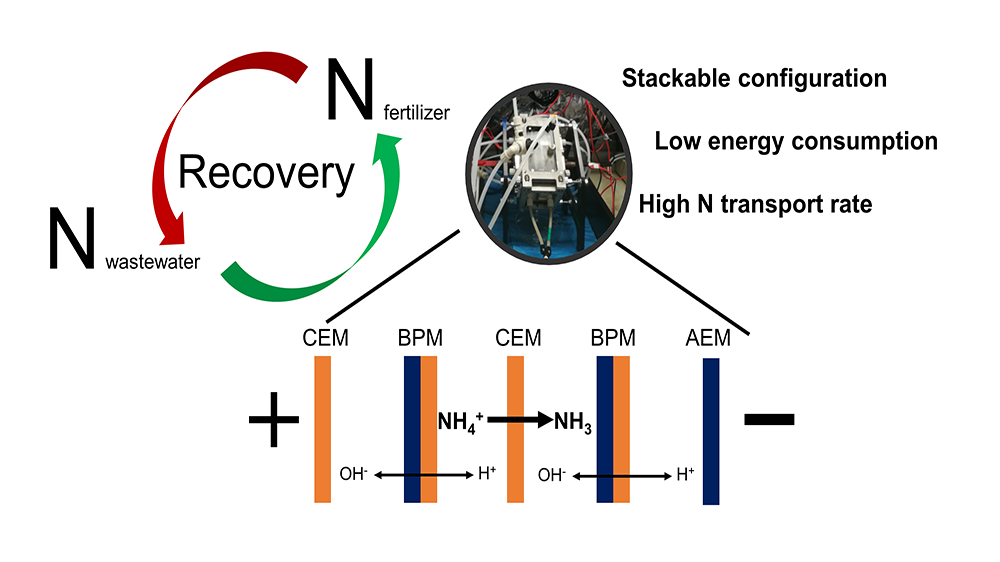
Minimal Bipolar Membrane Cell Configuration for Scaling Up Ammonium Recovery
Authors: Mariana Rodrigues, Thiago T. de Mattos, Tom Sleutels, Annemiek ter Heijne, Hubertus V.M. Hamelers, Cees J.N. Buisman, and Philipp Kuntke*
Wetsus, European Centre of Excellence for Sustainable Water Technology, Oostergoweg 9, 8911MA Leeuwarden, The Netherlands
Environmental Technology, Wageningen University, Bornse Weilanden 9, P.O. Box 17, 6700 AA Wageningen, The Netherlands
Published in: ACS Sustainable Chem. Eng. 2020, 8, 17359−17367
Abstract: Electrochemical systems for total ammonium nitrogen (TAN) recovery are a promising alternative compared with conventional nitrogen-removal technologies. To make them competitive, we propose a new minimal stackable configuration using cell pairs with only bipolar membranes and cation-exchange membranes. The tested bipolar electrodialysis (BP-ED) stack included six cell pairs of feed and concentrate compartments. Critical operational parameters, such as current density and the ratio between applied current to nitrogen loading (load ratio), were varied to investigate the performance of the system using synthetic wastewater with a high nitrogen content as an influent (NH4+ ≈ 1.75 g L-1). High TAN removal (>70%) was achieved for a load ratio higher than 1. At current densities of 150 A m-2 and a load ratio of 1.2, a TAN transport rate of 1145.1±14.1 gN m-2 d-1 and a TAN-removal efficiency of 80% were observed. As the TAN removal was almost constant at different current densities, the BP-ED stack performed at a high TAN transport rate (819.1 gN m-2d-1) while consuming the lowest energy (18.3 kJ gN-1) at a load ratio of 1.2 and 100 A m-2. The TAN transport rate, TAN removal, and energy input achieved by the minimal BP-ED stack demonstrated a promising new cell configuration for upscaling.
Download: link to pdf
DOI: 10.1021/acssuschemeng.0c05043
License: CC-BY-NC-ND
